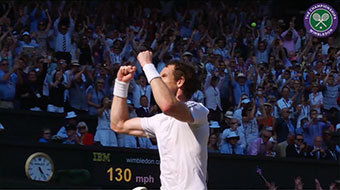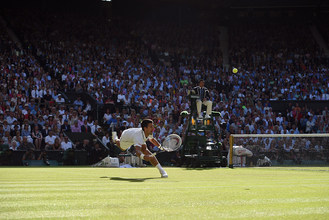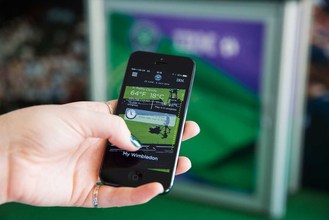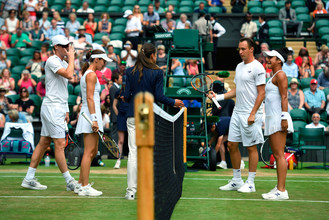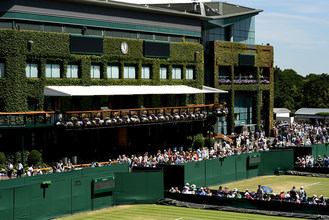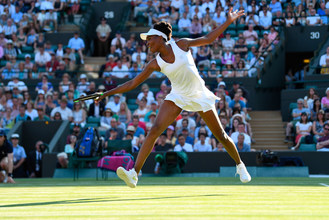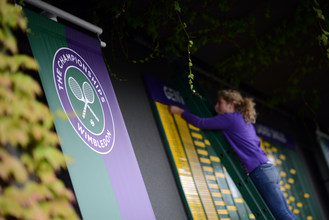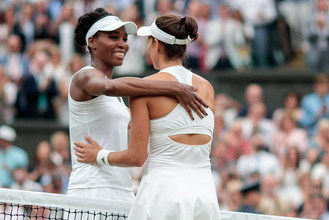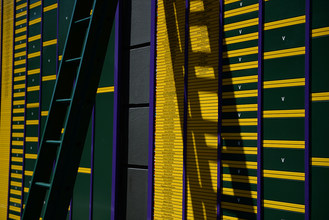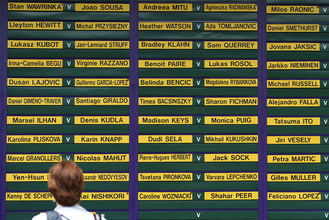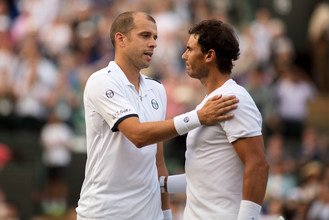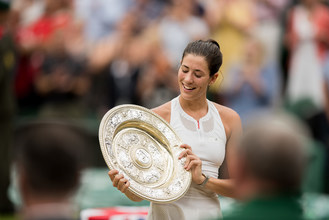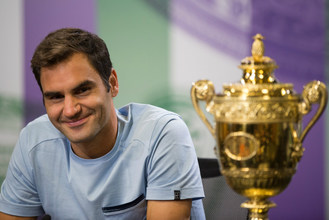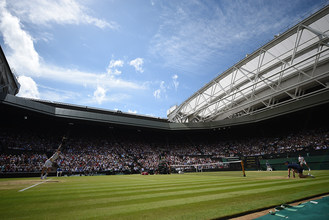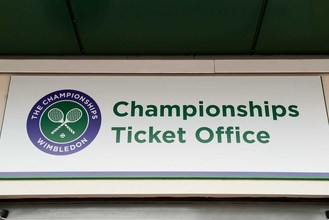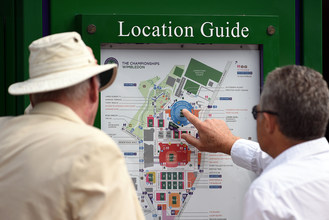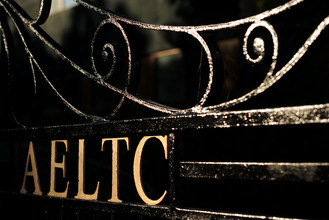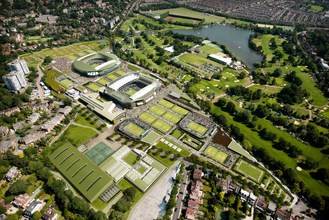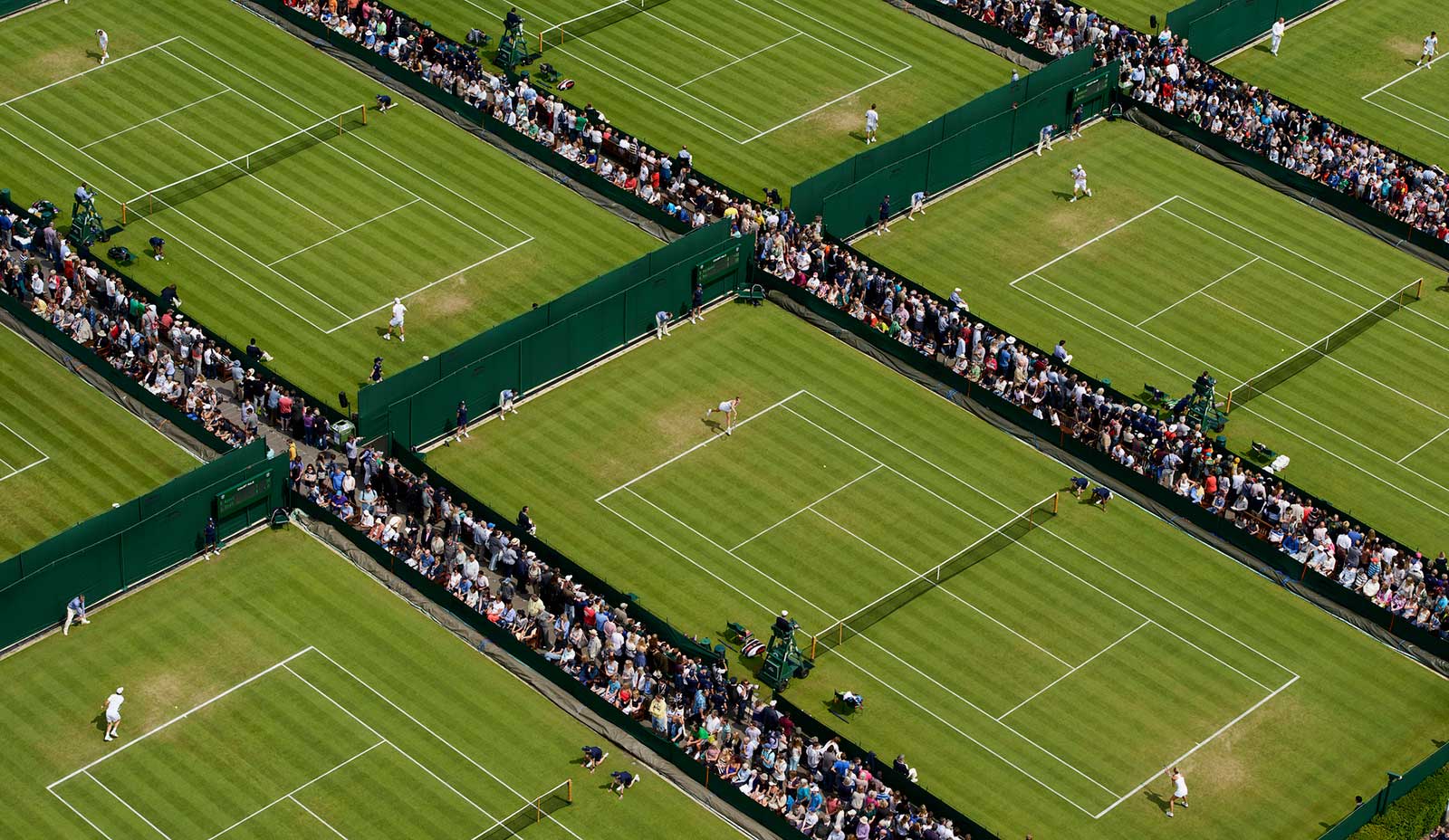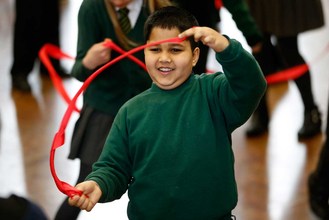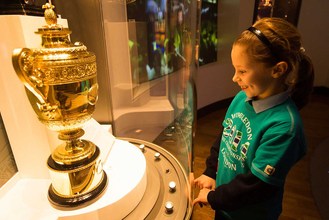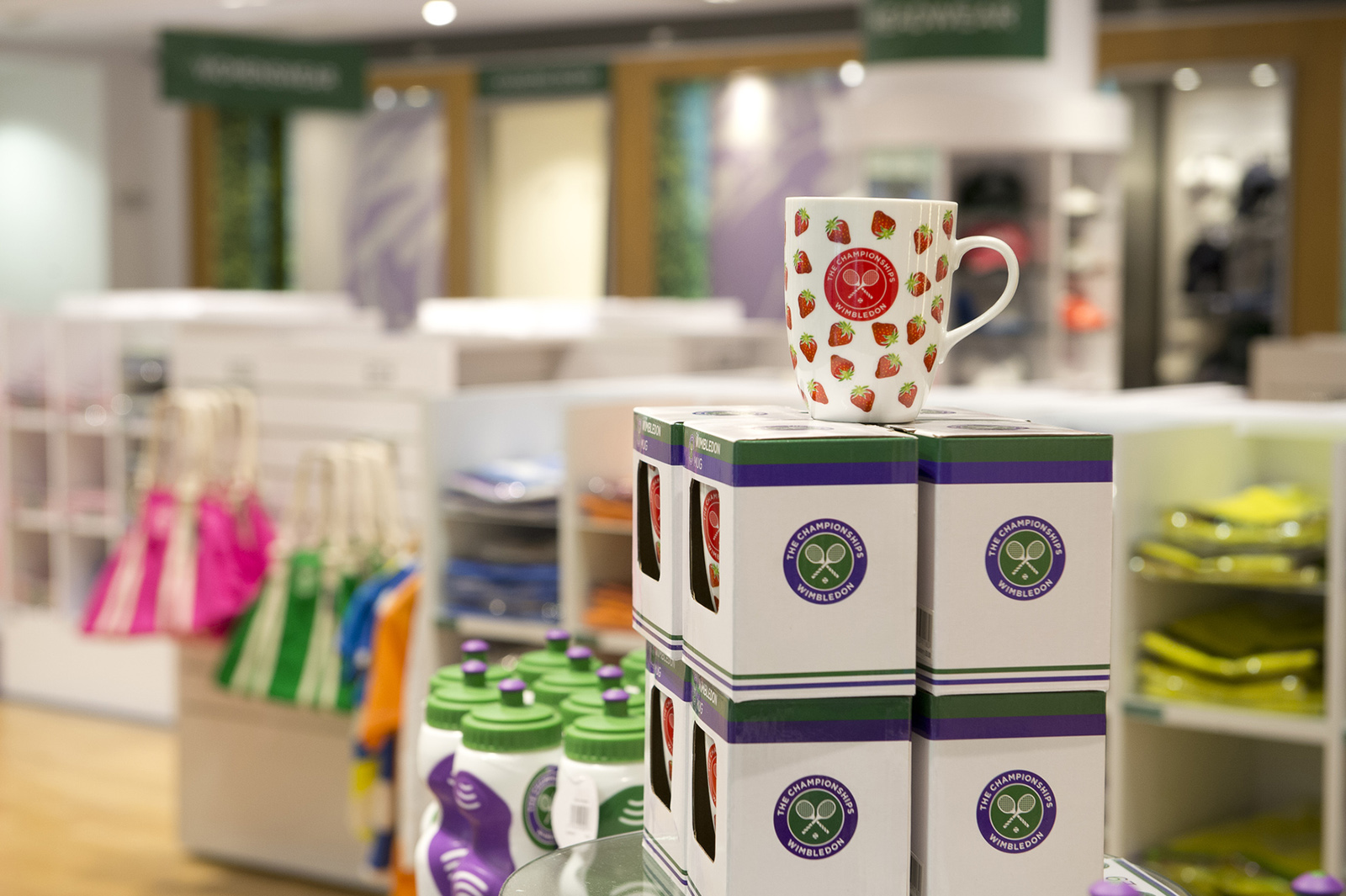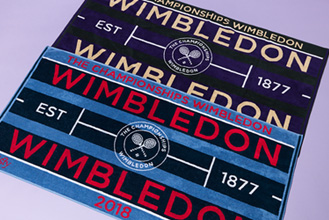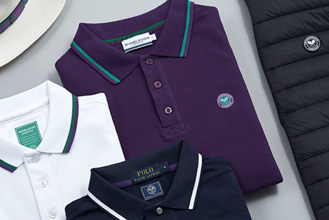1953: Maureen Connolly v Doris Hart
Wimbledon had to stand back and admire the precocious talent of Maureen Connolly when she won the title for the first time in 1952 and it would be true to say that at the 1953 Championships that most observers believed the only player who could mount a serious challenge against the Californian teenager was the experienced Doris Hart.
Hart had won 35 Grand Slam titles - singles, doubles, and mixed - in her career. She also managed to beat Connolly in two of their four matches. Hart had won Wimbledon once, in 1951, and in 1953, the seeding committee decided Connolly would beat Hart and then sat back as the two Americans progressed to the final without losing a set.
Hart had originally taken up tennis as a form of therapy after an accident which left her with a deformed leg and in the final against a player almost nine years her junior she won much support as she prevented Connolly from running away with the match. It may have been a closer match than most Connolly experienced at Wimbledon but she still won in straight sets, 8-6, 7-5.
1953: Jaroslav Drobny v Budge Patty
Jaroslav Drobny was a Czech who became a British citizen and played at Wimbledon before and after World War II. You can only speculate what Drobny might have achieved if Wimbledon had been played through the war years because he had to wait until 1954 when he won the title for the only time.
But it was his third round match in 1953 against the Paris-based American Budge Patty, which became one of the outstanding highlights of the Championships.
Drobny was seeded fourth, Patty was unseeded, and there was every indication it would become a marathon on the Centre Court as Drobny won the first set 8-6 and Patty captured the second 18-16. At around 9.15pm Drobny came through as victor 8-6, 16-18, 3-6, 8-6, 12-10, a total of 93 games, the most that had been played in a singles match at Wimbledon at that time. To mark this outstanding occasion both players were presented with inscribed cigarette cases by Wimbledon’s management committee.
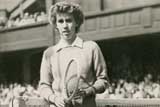
1954: Maureen Connolly
Meteoric rise is a description, which applies to a chosen few. By 1954, after playing in the Championships at Wimbledon just three times, Maureen ‘Little Mo’ Connolly had completely fitted the bill. She became the youngest player to win the US title in 1951, she won three Wimbledon titles running, and in two years had won a Grand Slam of the game’s major crowns.
At Wimbledon in 1954, the piercing returns which Connolly produced made the difference against the vastly more experienced American Louise Brough.
Connolly hit her ground-strokes with pace and precision and there was something grimly predictable about her win, even if Brough held a 5-2 lead in the second set. Connolly won 6-2, 7-5, but was still not fully developed as a player.
The 1954 Wimbledon was Connolly’s last. That same summer she broke her leg in a riding accident and that ended her career. She died in 1969.
1956: Lew Hoad v Ken Rosewall
They were called the "Tennis Twins," the incredible young Australians Lew Hoad and Ken Rosewall who set the world of tennis alight when they first came to Wimbledon in 1952 as 17-year-olds.
The powerful Hoad and the lighter and gifted Rosewall, with his delicate touch, came through the doubles event to reach the semi-finals at the first attempt and were doubles champions the next year. But that was just a taster of the two Aussies who were born within three weeks of each other in two closely placed suburbs of Sydney, and fate was to lead them towards just one Wimbledon singles final in 1956. The belief at the time was that Hoad, all dynamic power, would outhit Rosewall, no matter his fine ground-strokes, quick reactions at the net and confidence.
The final was magnificent, with Hoad opening up a precious lead of two sets to one. Then, if Hoad’s control was under threat when Rosewall led 4-1 in the fourth set it was only briefly. Hoad took five games in a row,and became a compelling champion, defending successfully the next year as well. With Rosewall, he won the doubles that year and also in 1953. Hoad never won Wimbledon again, Rosewall never won.
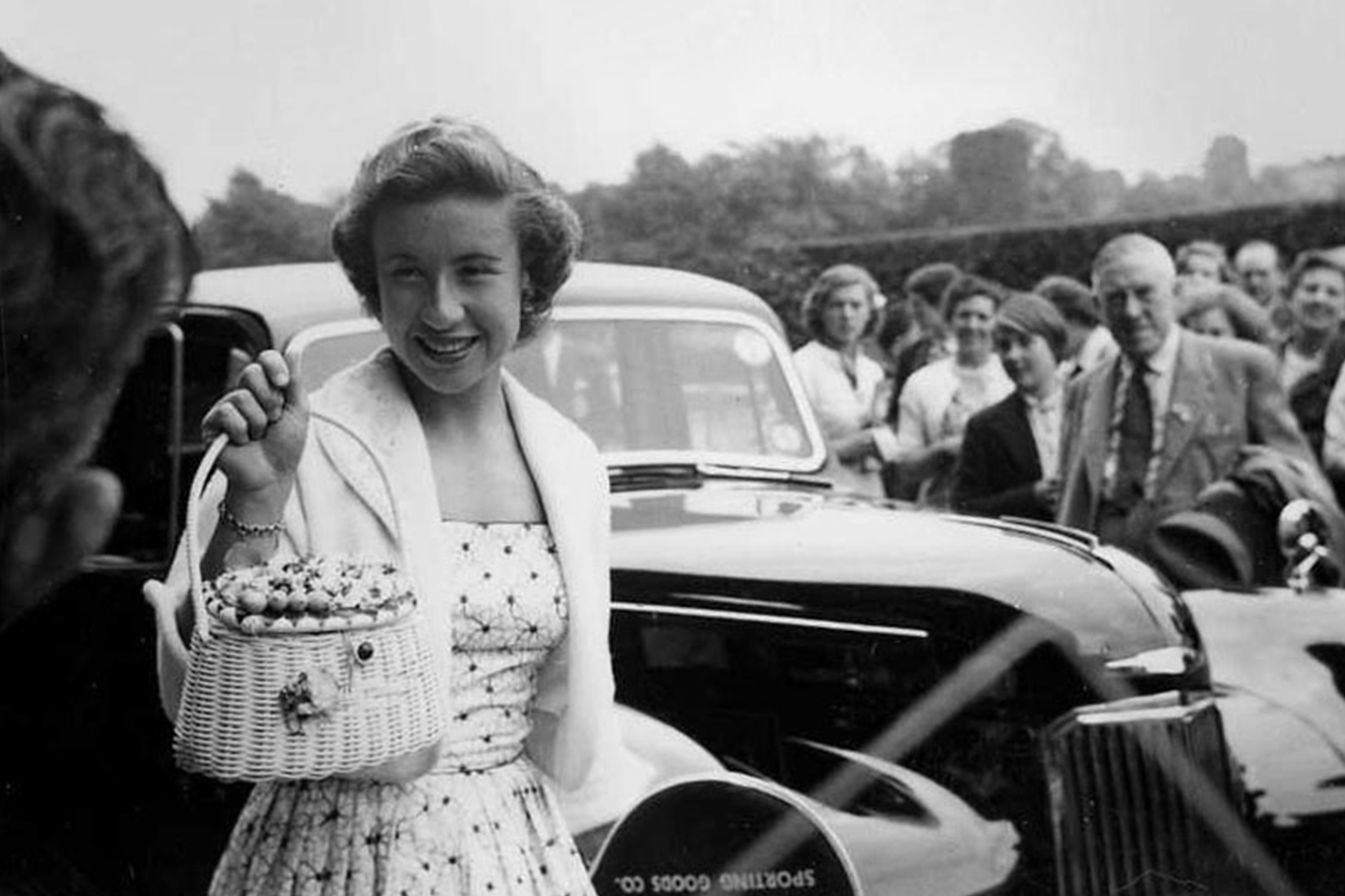
1957: The Queen’s visit
Queen Elizabeth visited Wimbledon for the first time in 1957 when her time on the Centre Court coincided with a demonstration by a campaigner from the “Life, Love, and Sex Appeal Party.” The Queen was on court for the men’s doubles final between the top seeds Lew Hoad and Neale Fraser of Australia and the Americans Gardnar Molloy and Budge Patty.
During a change of ends, Helen Jarvis of Croydon, wearing a white hat and flat white shoes, which would not damage the grass, crossed over the courtside wall and made her way to the centre of the court.
She was holding a banner in both hands and the words at the top said “Save Our Queen”. She then began to shout on behalf of her campaign for a new banking system. Within minutes she was taken away by the referee Col Legg and policemen. The unseeded Mulloy and Patty won the doubles final and the Queen has since been back to Wimbledon on three other occasions, 1962, 1977, and 2010.
1957: Althea Gibson
Althea Gibson, who was born in Silver, South Carolina, was the ninth American in succession to win the women’s singles at Wimbledon and the first black player to do so.
Her skills encompassed the world of tennis because she was also a winner at the United States and French championships. She was athletic and strong and had to overcome some racial pressures as well in her journey to the top ranks. Not until she was 23 was she allowed to play in the US Championships. She came to Wimbledon for the first time in 1956 and won the doubles and was a quarter-finalist in singles.
Her opponent in the 1957 final was the fifth-seeded Californian Darlene Hard, also her doubles partner, and Gibson dominated her from the start, winning the title 6-3, 6-2. On top of that momentous achievement Gibson won the doubles and was runner-up in the mixed doubles with Neale Fraser. At the Wimbledon Ball at the end of The Championships, Althea sang “I Can’t Give You Anything But Love” to the assembly.
1958: Ashley Cooper v Neale Fraser
The absence of the two Australians, Lew Hoad and Ken Rosewall, who had captivated Wimbledon in 1957 with their youth and brilliance and contrasting styles, led to an adjustment of the main challengers in 1958 when two more Australians - Ashley Cooper and Mal Anderson - were seeded first and second in the men’s singles.
Cooper had been second seed in 1957 and justified his ranking by reaching the final where he won just five games against Lew Hoad. Cooper, who had been taught the game by his school teacher father, came through some big challenges to make the 1958 final, and playing 13 sets in three matches.
Anderson was injured in the quarter-finals and retired and the left-handed Neale Fraser, seeded fourth, became the other finalist. The two men knew each other well, on and off the court, and were a formidable doubles team. But in the ultimate test at Wimbledon, Cooper, a skilled grass court player who knew how to apply pressure at the net, did not want to waste a second opportunity in the final. He won through in four sets, 3-6, 6-3, 6-4, 13-11.

